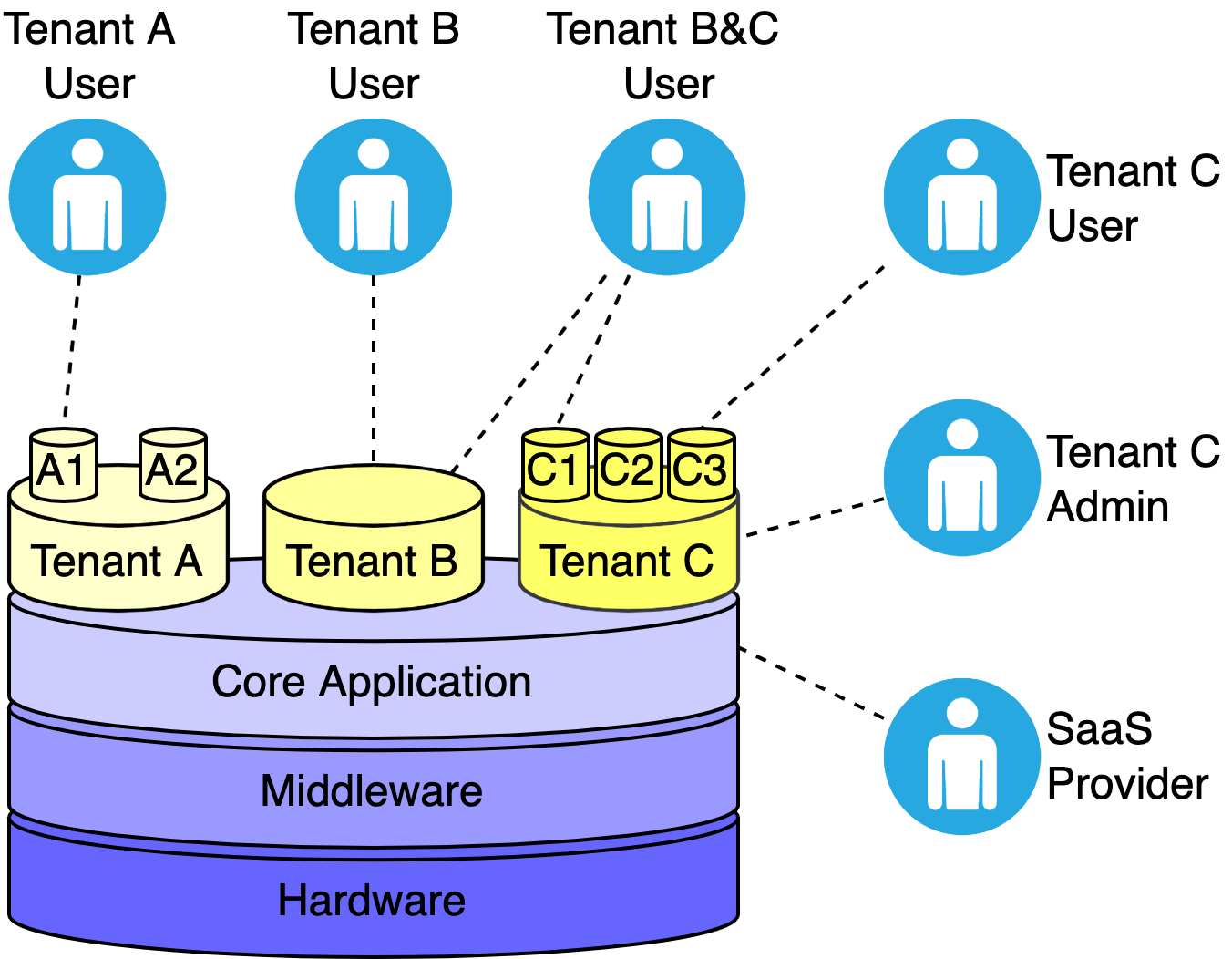Exploring Multi-Tenancy in Application Architecture: Types and Benefits
 Hemin Panchal
Hemin Panchal
Introduction
As businesses continue to leverage cloud computing and SaaS (Software as a Service) models, the concept of multi-tenancy in application architecture has become increasingly important. Multi-tenancy allows a single instance of an application to serve multiple customers, or tenants, while ensuring data isolation, security, and efficient resource utilization. This blog post will delve into what multi-tenancy is, the benefits it offers, and the different types of multi-tenancy architectures.
What is Multi-Tenancy?
Multi-tenancy is an architecture where a single instance of a software application serves multiple customers (tenants). Each tenant's data is isolated and remains invisible to other tenants. This approach contrasts with single-tenancy, where each customer has their own instance of the software.
Benefits of Multi-Tenancy
Cost Efficiency: Multi-tenancy reduces infrastructure and maintenance costs by sharing resources among multiple tenants.
Scalability: It allows easy scaling as new tenants can be added without the need for additional instances.
Maintenance: Updates and bug fixes can be applied to a single instance, simplifying maintenance and reducing downtime.
Resource Utilization: Efficient use of resources, such as CPU and memory, leads to better performance and lower costs.
Consistent Experience: Ensures all tenants use the same version of the application, providing a consistent user experience.
Types of Multi-Tenancy
Database Per Tenant
In this approach, each tenant has a separate database. This method offers strong data isolation and is easy to implement. However, it can become challenging to manage as the number of tenants increases, potentially leading to higher infrastructure costs.
Advantages:
Strong data isolation
Simplified backup and recovery per tenant
Disadvantages:
Higher cost due to multiple databases
Complex management for a large number of tenants
Shared Database, Separate Schemas
Here, a single database is shared among tenants, but each tenant has its own schema. This balances isolation and resource sharing, making it a popular choice for many applications.
Advantages:
Good balance of isolation and resource efficiency
Easier to manage compared to database per tenant
Disadvantages:
Potential for schema management complexity
Less isolation than separate databases
Shared Database, Shared Schema
In this model, tenants share the same database and schema. Data is typically tagged with a tenant identifier to maintain logical separation. This approach maximizes resource sharing but requires careful handling of data security and isolation.
Advantages:
Maximum resource efficiency
Simplified deployment and maintenance
Disadvantages:
Complex data isolation and security
Potential for performance issues with a large number of tenants
Hybrid Approach
A hybrid approach combines elements from the above models. For instance, critical data might be stored in a separate database per tenant, while less critical data is stored in a shared database with separate schemas or a shared schema. This approach allows for customization based on specific needs.
Advantages:
Flexibility to balance isolation and efficiency
Customizable based on tenant requirements
Disadvantages:
Increased complexity in implementation and management
Potentially higher costs
Choosing the Right Approach
Selecting the appropriate multi-tenancy model depends on various factors, including the level of data isolation required, the number of tenants, resource utilization, and management complexity. Here are some considerations:
Security Requirements: If strong data isolation is critical, a database per tenant or separate schemas might be preferred.
Scalability Needs: For applications expecting rapid growth in the number of tenants, shared schema models offer better scalability.
Cost Constraints: Shared database models are generally more cost-effective.
Management Complexity: Simpler models like shared schema reduce management overhead.
Conclusion
Multi-tenancy is a powerful architectural approach that can provide significant benefits in terms of cost efficiency, scalability, and resource utilization. By understanding the different types of multi-tenancy architectures, businesses can make informed decisions to optimize their applications and better serve their customers. Whether you choose a database per tenant, shared database with separate schemas, shared schema, or a hybrid approach, each model offers unique advantages and challenges. Careful consideration of your application's requirements will help you select the best multi-tenancy strategy for your needs.
Subscribe to my newsletter
Read articles from Hemin Panchal directly inside your inbox. Subscribe to the newsletter, and don't miss out.
Written by

Hemin Panchal
Hemin Panchal
I 👉👥 instruct 👀computers📲 to do ✨ Human 👤 Stuffs. And occasionally 🐶 use 🏻 my computer 🖱 Degree to save 🦎 the world. 🌎🙋